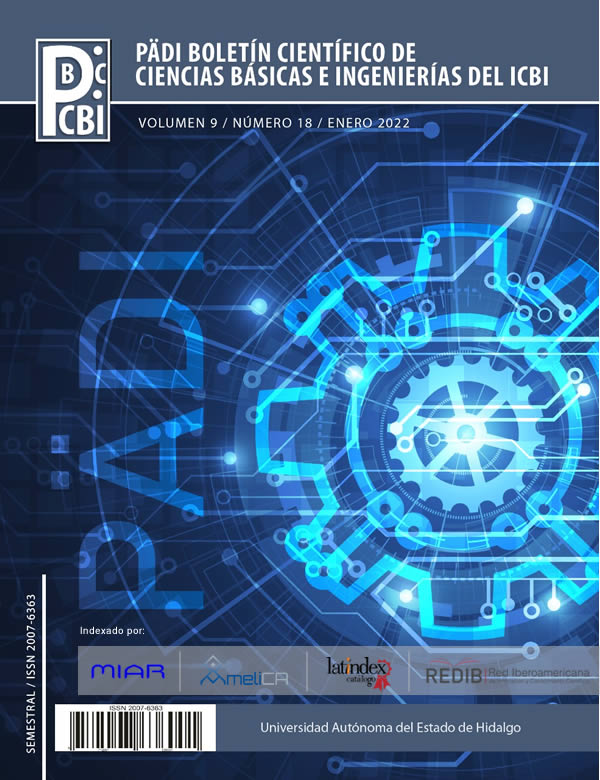Designing digital technology tasks bridging research and mathematics teaching
Abstract
In this paper we reflect on the process of designing and implementing an instructional task with technology. We explicate how some concepts and ideas related to problem solving, cognitive demand and instrumental mediation were incorporated in the design of the task. As a product of our reflection, we elaborate a table in which we included some elements that were identified as essentials during a design-implementation-redesign cycle.
Downloads
References
Barrera-Mora, F. y Reyes-Rodriguez, A. (2019). Reasoning processes developed by undergraduate mathematics students during the solution of geometry problem. Far East Journal of Mathematics Education, 19 (1), 61-86.
Barrera-Mora, F. y Reyes-Rodríguez, A. (2014). Sobre el aprendizaje con entendimiento en matemáticas. Revista Pädi, 2(3), DOI:10.29057/icbi.v2i3.525.
Campos-Nava, M. y Torres-Rodríguez, A. (2018). Diseño de tareas de Aprendizaje matemático con Geogebra: mecanismos articulados. Revista Pädi, 5 (10), 81-86. DOI: https://doi.org/10.29057/icbiv5.i10.
Campos-Nava, M. y Torres-Rodríguez, A. (2017). Las tareas de aprendizaje en la enseñanza de las matemáticas a distancia. Revista Mexicana de Bachillerato a Distancia, 9 (17), 147-155.
Doyle, W. (1988). Work in mathematics classes: the context of students’ thinking during instruction. Educational Psychologist, 23, 167-180.
Hiebert, J., Carpenter, T. P., Fennema, E., Fuson, K. C., Wearne, D., Murray, H., Olivier, A. y Human, P. (1997). Making sense: teaching and learning mathematics with understanding. Heinemann, Portsmouth, NH.
Hillmayr, D., Ziernwald, L., Reinhold, F., Hofer, S. y Reiss, K. (2020). The potential of digital tools to enhance mathematics and science learning in secondary schools: A context-specific meta-analysis. Computers and Education, 153, 103897. DOI: 10.1016/j.compedu.2020.103897
Inzunza, S. e Islas, E. (2019). Diseño y Evaluación de una Trayectoria Hipotética de Aprendizaje para intervalos de confianza basada en simulación y datos reales. Revista Bolema, 33 (63), 1-26.
Moreno-Armella, L. (2014). Educación Matemática: del signo al pixel. Ediciones Universidad Distrital Santander, Colombia.
Nieves, S; Caraballo, C.M. y Fernández, C.L. (2019). Metodología para el desarrollo del pensamiento lógico-matemático desde la demostración por inducción complete. Revista Mendive, 17 (3), 393-408.
Reino, M. y Galán, G. (2020), Cinemática de mecanismos Planos, Teoría y Métodos Resueltos. Colección de manuales uex-113. España: Publicaciones de la Universidad de Extremadura.
Santos-Trigo, M. (2020). La Resolución de problemas matemáticos: conectando el trabajo de Polya con el desarrollo de un razonamiento digital. In Yuri Morales-López y Ángel Ruíz (eds) Educación Matemática en las Américas. Comité Interamericano de Educación Matemática, República Dominicana, pp. 29-40.
Schoenfeld, A. H. (1992). Learning to think mathematically: Problem solving, metacognition, and sense making in mathematics. In D. Grouws (ed.) Handbook for Research on Mathematics Teaching and Learning, Macmillan, New York, pp. 334-370.
Stein, M. K., Remillard, J. y Smith, M. (2007). How curriculum influences student learning. In F.K. Lester (ed.) Second handbook of research on mathematics teaching and learning. Macmillan: New York, pp.319-369.
Stein, M. K., y Smith, M. S. (1998). Mathematical tasks as a framework for reflection: from research to practice. Mathematics teaching in the middle school, 3, 268-275.













